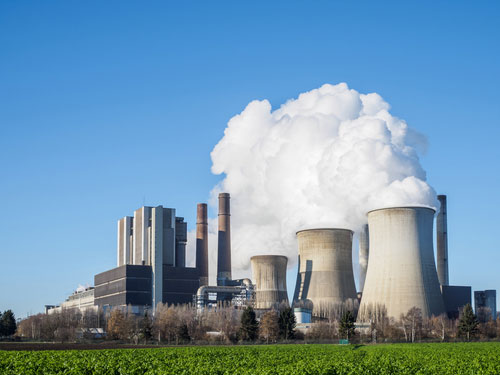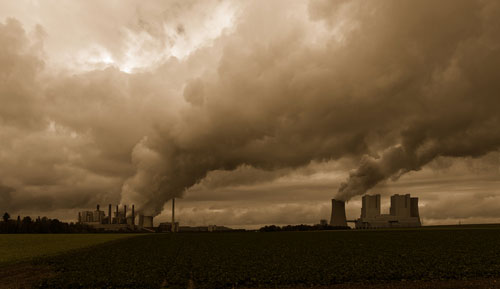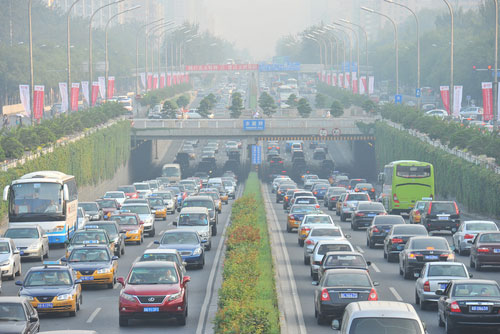Would humanity have exhausted nature’s annual budget if everybody in the world lived like European residents? Not really. Let us explain.
The Earth Overshoot Day Has Come For Europeans
In 2019, the Earth Overshoot Day falls on the 10th of May for the average European citizen, according to a report from WWF and the Global Footprint Network. Globally, this day, happening only later in the year, points out the time when each year, humanity exceeds the threshold of Earth’s ecosystems annual renewal capacities. And in May 2019, this starts applying not to all humanity, but to European residents.
We usually say that from the Overshoot Day on humanity lives on “credit” with the Earth and we get in debt regarding the natural abilities the planet offers us each year. And every year, this date comes sooner and sooner in the calendar. Until 1970, human societies lived and consumed without exceeding the natural capacity of natural ecosystems. From there on, we’ve only known how it feels like to go over the planet’s ability to regenerate.
But the idea behind of the Earth Overshoot Day often misleads us. It lets us think that we have “consumed” all the “available resources” for a year in just 8 months. Or, if we think of European citizens in 2019, in just 5 months. For Americans, it’s even worse – 3,5 months. This belief drives us to reason in terms of stocks of resources and consumption. But is this really the case? Have we really consumed more fish in 8 months than the amount that’s renewed in one year? Have we destroyed more forests in 8 months than the ones that grow in one year? The answer is no, we haven’t, according to data from the Global Footprint Network. But that shouldn’t stop us from worrying, because the problem is real. Let’s dig deeper into this issue.
- Related
Earth Overshoot Day: It’s Not (Only) A Question Of Resources

Determining when is the Earth Overshoot Day means assessing two things: the planet’s biocapacity and our ecological footprint. Biocapacity is the ability of ecosystems to renew themselves. It is calculated by observing Earth’s available resources (how many hectares of forests, pastures or farmland, the size of fish or animal populations, etc.) and dividing these figures by the total population. The result is an average value in hectares per person indicating how many hectares/resources we should consumer per person each year, in order to keep the planet balanced.
Biocapacity is then compared to our ecological footprint, i.e., the impact our life has on the environment. Again, we calculate this ecological footprint in hectares per person. Concretely, the ecological footprint is calculated by assessing how much biologically productive sea and land are needed to produce all the resources a population consumes and to absorb human waste and the carbon emissions resulting from our activities.
Our point here is simply to raise awareness that if we look at the data provided by the Global Footprint Network (GFN), our huge ecological footprint is not a question of lack of resources but mostly an issue of carbon. For instance, the natural biocapacity of the land in terms of forest area is 0.73 hectares per person per year and we consume on average only 0.27 hectares per person each year, GFN data shows. The same seems to be true for grazing land and fishing grounds. So what’s the problem then?
- Related:
Earth Overshoot Day: An Issue Of Energy And Carbon Intensity

While the classic Earth Overshoot Day storyline in terms of resources may be somewhat misleading, it still helps understand that there is an ecological emergency going on. But this urgency, in reality, is not linked (only, or mostly) to a question of resources, but to a question of energy, and more precisely, of carbon intensity.
In fact, in addition to analyzing the planet’s resources, the Earth Overshoot Day also analyzes our carbon footprint, i.e. the CO2 we emit every year. And when we look at the data of the Earth Overshoot Day, we realize these CO2 emissions are precisely what make us switch to “ecological debt”. Greenhouses gases and CO2 emissions (often referred to as one and the same) are what’s really pushing our natural ecosystems. We’re emitting a lot these gases, way more than what ecosystems can absorb. And in fact, our carbon footprint accounts for over 60% of our impact on the environment.
When we emit CO2 into the atmosphere, it takes a certain area of forests or oceans to absorb that it and regulate it. The ocean, for example, absorbs much of the atmospheric CO2 via marine plankton, which converts this carbon into organic matter. But at the moment, we’re emitting so much CO2 that it is impossible for natural ecosystems to absorb it. As a result, CO2 accumulates in the atmosphere and durably modifies other natural cycles, particularly the climate or the acidity of the ocean. Therefore, Earth Overshoot Day represents the date from which we exceeded the planet’s natural biocapacity in terms of carbon absorption, more than in terms of natural resources. The fundamental question is, therefore, a question of carbon intensity: if there is an ecological emergency, it’s because all our activities emit too much CO2.
- Related:
How To Reduce Our Ecological Footprint?

The concept of Earth Overshoot Day does not mean we consume more resources than nature offers us. Or at least this is not that crystal clear. But one thing is certain: this day represents symbolically the date from which every year, nature starts getting in greenhouse gases and CO2 overdose due to human-caused emissions. In May 2019, if everyone was European humankind wouldn’t need the resources of 2.8 planets. Instead, we would need both resources and the ability to sink carbon.
This illustrates the ecological problem is above all an energy issue. We are in chronic overconsumption of energy, in particular, carbon energy, so much that ecosystems are no longer able to sink the surpluses. The first solution that comes to mind is obviously to make a transition to carbon-free energies such as renewables. But the solution also lies in reducing our energy needs. In a world where everyone is dependent on their individual cars, where transport plays a decisive role in all areas of life, it’s difficult to manage things around without oil. We can and must consume fewer resources, however, it’s also important to be aware that a huge part of the problem will remain as long as we do not stop injecting millions of tons of CO2 every year into the atmosphere.
Of course, aside from that, we must keep in mind the planet’s natural resources aren’t unlimited: some fish stocks are decreasing because we consume too much of certain species, forest stocks are decreasing progressively because we are still deforesting too much compared to the trees we’re (not) planting and this is affecting biodiversity at a speed at which 200 species are lost every day – which is as dangerous for the sustainability of the planet as climate change. Therefore, we need to decrease our consumption (and production) of resources, avoid exploring fragile stocks (giving them time to renew themselves), avoid wasting resources… But let’s keep in mind that a huge share of the ecological problem is about energy consumption and CO2 production, which is probably more harmful than about our consumption of resources – shall we?
Image credits to park on Shutterstock, car on Shutterstock, factory on Shutterstock and coal on Shutterstock

